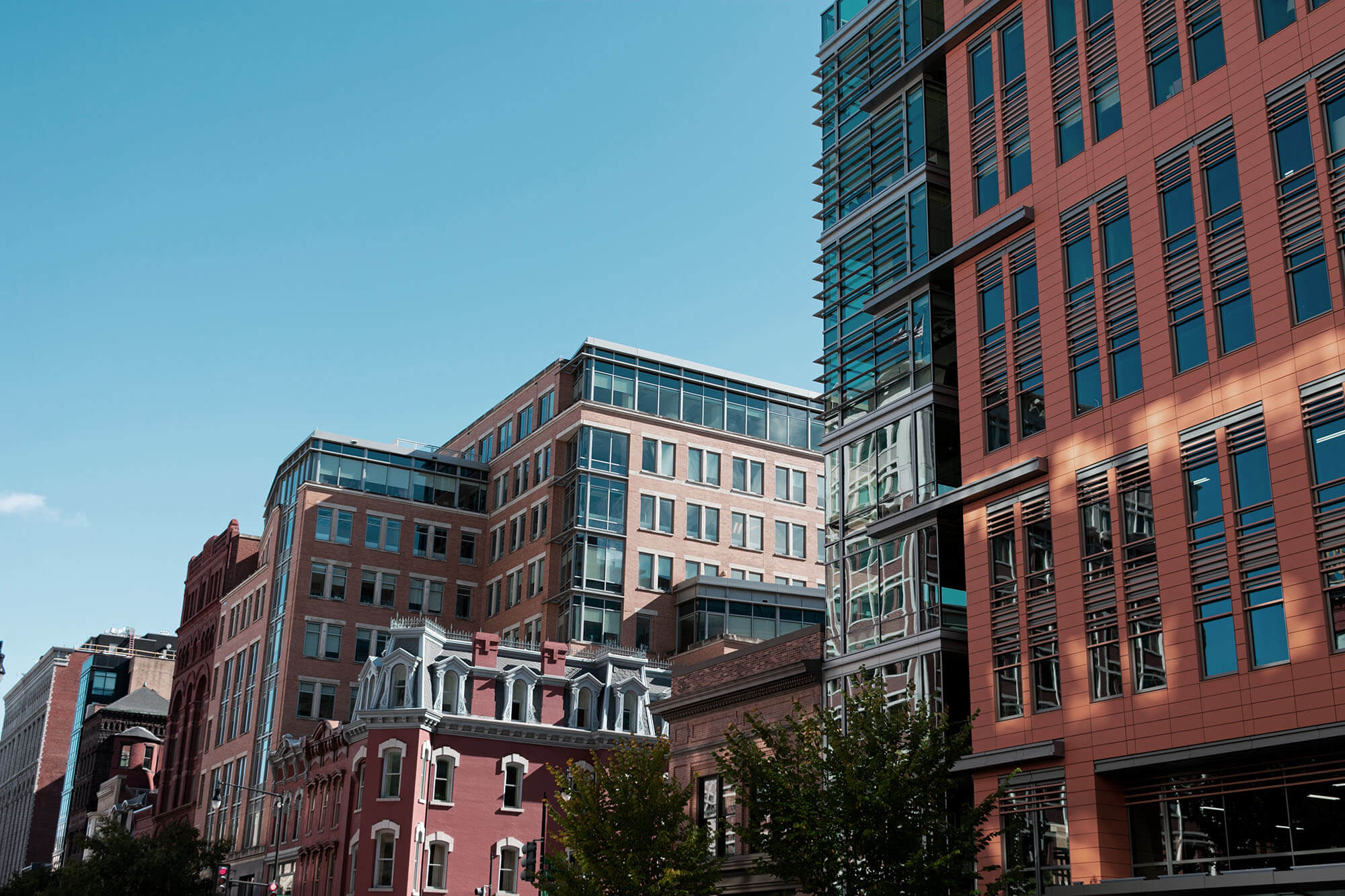Table of Contents
- Executive Summary
- About Our Experts
-
General
- 1. How does the UFLPA compare with CAATSA?
- 2. How dependent is the U.S. on cotton, tomatoes, and other top Xinjiang exports?
- 3. What resources are available to importers looking for alternatives to goods, wares, and merchandise previously sourced in Xinjiang?
- 4. Will the UFLPA have an impact on exports from the US to Xinjiang?
-
Compliance
- 5. The UFLPA requires importers looking to rebut the presumption of forced labor to produce “clear and convincing evidence” supporting their case. What evidence would qualify as clear and convincing?
- 6. Can suppliers simply certify that their goods have no known sourcing in the Xinjiang region?
- 7. What tools and technology will HSI be using to hold companies accountable under the UFLPA?
- 8. If the UFLPA doesn’t, on its surface, appear to apply to your imports, should you still conduct a supply chain audit?
- Enforcement
- Anti-Transparency and Evasion
- Additional Resources
Executive Summary
The Uyghur Forced Labor Prevention Act (UFLPA), effective as of June 21, 2022, prohibits goods, wares, and merchandise made wholly or in part with Xinjiang Uyghur Autonomous Region (XUAR) forced labor from entering U.S. markets. While the United States’ ban on goods made with forced labor dates back to the Tariff Act of 1930, the UFLPA presents importers with a new set of compliance challenges:
- The UFLPA introduces a “rebuttable presumption” that all goods, wares, and merchandise sourced from the XUAR are made with forced labor. U.S. importers must provide “clear and convincing” evidence that a good from Xinjiang was not made with forced labor if they wish for it to enter the U.S. market.
- Instead of prohibiting specific categories of goods such as cotton or tomatoes, the UFLPA bans any goods made wholly or in part with XUAR forced labor. This implicates all goods imported from anywhere in the world that have inputs sourced from Xinjiang.
- Bipartisan support for the statute forecasts its “vigorous” enforcement. In May, lawmakers called on Congress to devote an unprecedented $70.3 million to combating forced labor in fiscal year 2023. (This is up from $22 million set aside for implementation in 2022.) U.S. importers can expect border control to be more rigorous and well-provisioned than in years past.
Since the UFLPA will remain in effect until 2030 (or, as the law states, until “the People’s Republic of China has ended mass internment, forced labor, and any other gross violations of human rights” of Muslim minority groups), U.S. importers must find long-term solutions to any forced labor risk in their supply chains.
A week after the UFLPA went into effect, we invited a handful of legal, regulatory, and human rights experts to discuss the law at a virtual roundtable. By addressing that live audience’s most pressing questions, this ebook provides U.S. importers and compliance officers with a better understanding of the UFLPA’s challenging mandate.
About Our Experts

John Foote
Partner at Kelley Drye & Warren
John Foote is a partner and head of the customs practice at Kelley Drye & Warren in Washington, DC. There, he is an advisor to companies and a widely recognized expert on Section 307 of the Tariff Act of 1930, the U.S. forced labor import ban. He is also the author of a Substack newsletter called Forced Labor and Trade, where he provides analysis and commentary on “the most interesting law in the world.”

Jessica Rifkin
Senior Attorney/Customs, Trade and Litigation Team Leader at Benjamin L. England & Assoc. LLC
Jessica Rifkin practices customs and international trade law with a special emphasis on food, drugs, cosmetics, and medical devices. She regularly represents clients before U.S. Customs and Border Protection and the U.S. Department of Commerce. With over 20 years’ experience in the customs and trade area, Ms. Rifkin specializes in forced labor and has successfully aided foreign producers in obtaining the lifting of Withhold Release Orders and Findings issued by CBP.

Jennifer Williams
Acting Section Chief of Forced Labor for the Department of Homeland Security Center for Countering Human Trafficking
Jennifer Williams is responsible for supporting and coordinating complex, cross-departmental HSI investigations into allegations of forced labor at overseas manufacturing facilities that export goods to the U.S. and/or have a nexus to the U.S. through other means. Acting Section Chief Williams brings almost twenty years of law enforcement experience, having investigated a wide variety of crimes, including human trafficking, commercial fraud, human rights violations, and money laundering, among others.
General Questions
1. How does the UFLPA compare with CAATSA?
Both the Countering America’s Adversaries through Sanctions Act (CAATSA) and the UFLPA are augmentations of the forced labor import ban, Section 307 of the Tariff Act of 1930. “The UFLPA was substantially modeled after Section 321(b) of CAATSA,” says Foote.
Both laws have rebuttable presumptions, but the UFLPA’s is much broader in scope. Foote explains:
Whereas CAATSA focuses on a class of workers (North Korean laborers), the UFLPA focuses on a region (the Xinjiang Uyghur Autonomous Region) and a set of Chinese entities that come to be listed under the law, on the basis of some prohibited connection to a social program of concern associated with forced labor. Any good produced wholly or in part in this region, or by a listed entity, is subject to the law.
In other words, CAATSA presumes a good made wholly or in part by North Korean laborers to be made with forced labor while the UFLPA makes the same presumption about a good made wholly or in part in Xinjiang (or by a listed entity).
2. How dependent is the U.S. on cotton, tomatoes, and other top Xinjiang exports?
The Strategy to Prevent the Importation of Goods Mined, Produced, or Manufactured with Forced Labor in the People’s Republic of China (UFLPA Strategy) published by Homeland Security on June 17, 2022 lists four industry sectors as priorities for enforcement due to their heightened risk of Xinjiang forced labor: apparel, cotton and cotton products, silica-based products (including polysilicon), and tomatoes and downstream products.
Foote maintains that although the United States imports billions of dollars of goods containing such inputs each year, from dozens of jurisdictions, it has no official import data that would reveal or indicate the extent to which these products may have originated wholly or in part in Xinjiang.
The United States currently imports some $500 billion worth of goods from China annually, according to Bloomberg. It is also unclear how much of that trade has a nexus with Xinjiang or the entities named in the UFLPA strategy.
3. What resources are available to importers looking for alternatives to goods, wares, and merchandise previously sourced in Xinjiang?
Our experts are not currently aware of any comprehensive resources listing alternative suppliers. Foote notes, however, that “the United States extends most-favored nation (‘MFN’) status, with low average duty rates, to 158 other member countries of the WTO.” The UFLPA would still apply to imports from these jurisdictions, but finding compliant suppliers may prove easier.
4. Will the UFLPA have an impact on exports from the US to Xinjiang?
“No,” says Foote. The UFLPA places restrictions on goods entering the U.S. market as opposed to leaving it.

In my personal view, the rebuttable presumption of the UFLPA is unlikely to be rebutted. Which means if you want to navigate enforcement, the question is about conforming your supply chain so that it doesn’t have a nexus to Xinjiang, and it doesn’t have a nexus to a listed entity.
Compliance
5. The UFLPA requires importers looking to rebut the presumption of forced labor to produce “clear and convincing evidence” supporting their case. What evidence would qualify as clear and convincing?
Section VI, “Guidance to Importers,” of the UFLPA Strategy provides a general answer to this question in subsections B and C, pages 49-51. It does not, however, go into detail about what forms of documentation will suffice in all cases.
The Strategy recommends, for example, that importers should supply documentation that “indicates the provenance of each component of the imported good,” including “unique identifiers” for materials and inputs when possible (49); but it does not say how that information must be procured in order to qualify as convincing.
Foote confirms that there “is no evidentiary standard” for proving “that a good does not have a nexus to Xinjiang or to a designated entity.” He advises companies debating an investment in supply chain mapping technology to take the plunge:
If you hope to be able to get out from under a detention by showing there is no nexus to Xinjiang or to a listed entity [or to Xinjiang forced labor], you’re going to have to make investments and know things about who made the goods and who made the components, who produced and harvested those raw materials.
If seeking to rebut the presumption, an importer will have to convince CBP so thoroughly that CBP will in turn vouch for the shipment to Congress.
“In my personal view, the rebuttable presumption of the UFLPA is unlikely to be rebutted. Which means if you want to navigate enforcement, the question is about conforming your supply chain so that it doesn’t have a nexus to Xinjiang, and it doesn’t have a nexus to a listed entity,” concludes Foote.
6. Can suppliers simply certify that their goods have no known sourcing in the Xinjiang region?
Suppliers may certify that their goods and inputs have no known nexus with Xinjiang or entities named in the UFLPA. “However,” says Foote, “a certification will not be sufficient to obtain release of a shipment that is detained under the UFLPA.”
7. What tools and technology will HSI be using to hold companies accountable under the UFLPA?
According to the UFLPA Strategy, the President’s Budget for FY 2023 requests that $19.4 million be dedicated to enforcing trade laws aimed at combating forced labor. That number has since grown to $70.3 million.
Foote helps put this number in perspective by comparing it to agencies’ overall budgets.
The Office of Foreign Asset Control (OFAC), which enforces U.S. sanctions law, has a roughly $40 million budget total and about a 200 headcount for enforcing all U.S. sanctions law. The Bureau of Industry and Security over at the Department of Commerce, which enforces export control laws, has about a $70 million budget total, and that includes enforcement functions as well as other functions. So $70 million in this next year’s budget request is an unprecedented amount of funding for the enforcement of a single law – and particularly one like this that has the potential to encumber billions of dollars of trade.
In addition to hiring 300 additional staff, including 50 CBP officers, the funds would support “technology, training, strategy, and outreach.” Section III of the Strategy (p. 31-3) details CBP’s plans to invest in supply chain tracing technologies and update its case management systems.
Sayari Graph is used by a number of government agencies, including OFAC and CBP, to support financial crime investigations and enforce regulatory compliance.
8. If the UFLPA doesn’t, on its surface, appear to apply to your imports, should you still conduct a supply chain audit?
Yes. Because the UFLPA applies not just to goods made in Xinjiang and by named entities, but also to goods with inputs from Xinjiang, all supply chains should be audited for risk exposure.
Illegal transshipment is one method by which inputs made with forced labor may enter the U.S. undetected. Rifkin offers the example of a Xinjiang-origin input being exported to Vietnam for manufacture. “Under the letter of the law, that good would still be subject to the UFLPA,” she says.
The Xinjiang Production and Construction Corps (XPCC) made heavy use of transshipment evasion when it was designated by the U.S. government in 2020. A 2021 study published by the Center for Advanced Defense Studies (C4ADS) found that, since 2019, XPCC majority-owned companies “have exported 4,559 shipments to their top trade partners, who then re-exported these goods to the United States and other countries.”
Importers are therefore strongly advised to trace and document their supply chain inputs, regardless of where in the world they are sourced.
Enforcement
9. How can private companies be held criminally liable under the law?
According to Williams, if an importer or other entity involved in the production or manufacture of an imported good is both aware that the good is made with forced labor and is benefitting from that forced labor, they may be charged with the criminal statute of forced labor.
“Under the statute for forced labor,” summarizes Williams, “which is 18 USC §1589, subsection B, any entity who is benefiting from a venture in which the forced labor is taking place, as long as we can show they had knowledge or were in reckless disregard of the fact that that forced labor is taking place, can be held criminally liable.”
This applies not just to importers, but also to U.S. businesses in joint ventures with foreign factories manufacturing those goods and benefiting from that production. Williams gives this example:
Let’s say you have a rubber glove manufacturer out of Malaysia that has a WRO issued against them. That rubber glove manufacturer could supply 50 different importers in the United States. […] You could have a U.S. entity – either a company or an individual – that is involved in a joint venture or an investor or somehow benefiting from the profits that that manufacturer is receiving through the sale of those rubber gloves manufactured with forced labor. […] It might not be one of these 50 importers, but you might have Company B in the U.S. that is in a joint venture or an investor in the company in Malaysia, and they’re benefiting. So there they are liable.
Proving knowledge of forced labor is very difficult, she adds, “but we [DHS] are as an agency dedicated to enforcing this law and supporting the UFLPA and the efforts of the U.S. government as a whole.”
10. How does voluntary self-disclosure impact enforcement actions of the UFLPA?
“Before voluntarily disclosing a UFLPA-related violation to U.S. Customs and Border Protection, an importer should seek the advice of counsel,” advises Foote.
Anti-Transparency and Evasion
11. How would U.S. importers go about confirming forced labor on the ground in light of COVID travel restrictions?
“The UFLPA does not require U.S. importers to confirm the existence or absence of forced labor ‘on the ground,’” says Foote.
“Practically, the UFLPA requires importers to undertake extensive supply chain mapping and traceability work. Such work can be undertaken from any jurisdiction.”
Sayari offers a free master class on using public data to mitigate the risk of Xinjiang forced labor in global supply chains.
12. What if suppliers cannot or will not disclose their sources (e.g., in compliance with the Chinese Anti-Sanctions Law)?
There are more than 720,000 Chinese companies in Xinjiang.
Learn how to mitigate your risk using public data.

Any company that wishes to be a part of a U.S.-bound supply chain will certainly have to disclose its identity and its location, at the very least, as a condition of access to the largest consumer market in the world. And that is the consequence of this law.
Additional Resources
Strategy to Prevent the Importation of Goods Mined, Produced, or Manufactured with Forced Labor in the People’s Republic of China
UFLPA Strategy | Department of Homeland Security
UFLPA FAQs
Q&A | Department of Homeland Security
H.R. 1155 – Uyghur Forced Labor Prevention Act
UFLPA Law | 117th U.S. Congress
Mitigating the Risk of Xinjiang Forced Labor in Global Supply Chains Using Public Data
Master Class | Sayari
How to Mitigate the Risk of Xinjiang Forced Labor in Your Supply Chain
Tip Sheet | Sayari
Expert Roundtable on the Implications of the Uyghur Forced Labor Prevention Act
Webinar | Sayari
Forced Labor & Trade: Analysis and Insight on the U.S. Forced Labor Import Ban
Newsletter | John Foote

About Sayari
Sayari is the transparency company enabling economic security and supply chain integrity for the Fortune 1000, global regulators, and the national security community. Our platform provides unprecedented visibility into customer, supplier, and counterparty networks by transforming the world’s largest commercially available collection of trade and public data into a dynamic, living model of corporate ownership and trade activity. Sayari’s solutions support risk resilience, regulatory compliance, and responsible business decisions across supply chain risk management, sanctions and export controls, ESG, and forced labor. Headquartered in Washington, D.C., and backed by TPG, the world’s fourth-largest private equity firm, Sayari is trusted by government agencies and regulated enterprises in over 35 countries.
